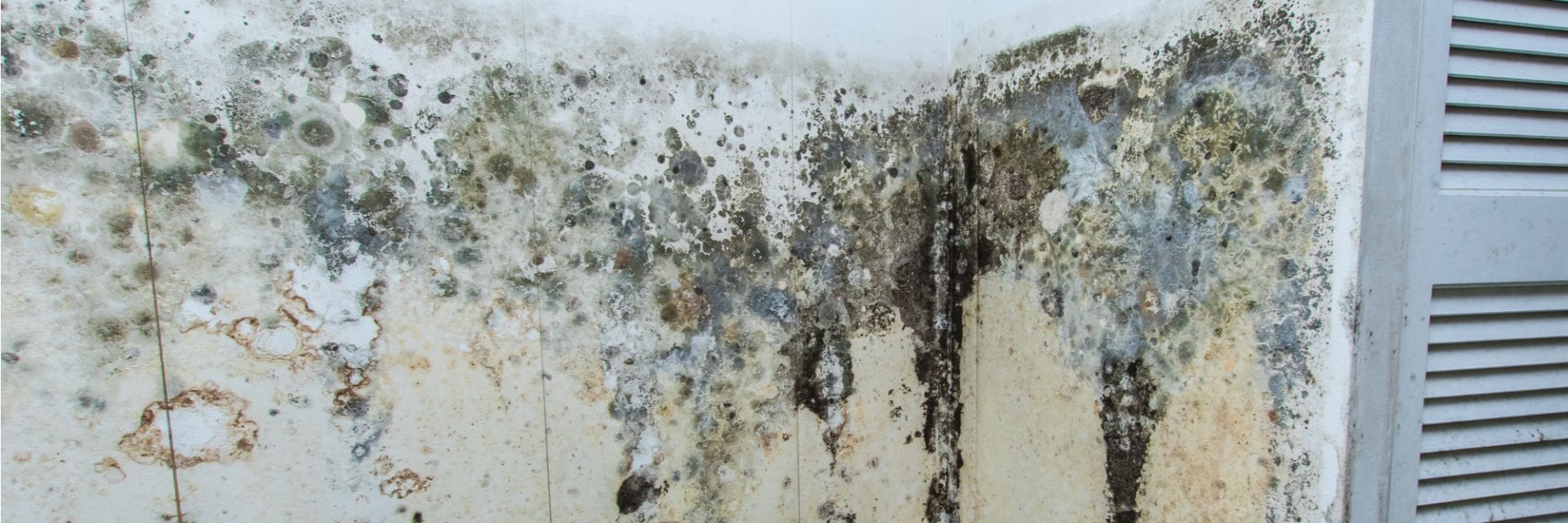If you need mold sampling assistance as discussed in this article, call us at 973-366-4660 or email us at info@atlenv.com for details and a free estimate.
Written By: Robert E. Sheriff, MS, CIH, CSP, President
March 20, 2020
! Mold Control Information! Control Water-Control Mold
Controlling Mold and It’s Source
There is no single universal way to eliminate all mold growth since mold is part of the environment (Indoors! Outdoors! Everywhere!). But the single most effective method of reducing the potential for mold growth indoors is to eliminate the source of moisture. Moisture doesn’t always mean actual water; it can also be high humidity. Few molds grow when the humidity is under 60%. If they do, it is very slow.
It is safe to say that you cannot stop mold growth until you stop the moisture. Cleaning, paints, replacement of sheetrock, and new wood and new ceiling tiles won’t do much good except as a very temporary solution until the moisture problem is eliminated. Leaky roofs, damp basements, leaking windows, plumbing leaks, condensation, poor draining and water ponding on the roof are typical problems that must be resolved in any type of building whether office, warehouse, residential or manufacturing.
Reducing and Eliminating Moisture
Each of the aforementioned groups of problems may involve different methods of reducing/eliminating moisture or water source.
Residences can have poorly ventilated kitchens and baths. Damp carpets, especially with pads and over wood subfloors are a great source of molds. Bathtubs and showers that have old caulking, water ponding, or accumulated dirt and soap residues will hold moisture and mold nutrients. Poorly draining room air conditioners can drain into the house, behind the walls, down the outside of the building, or into the ground, and then back into the house through walls or the basement. Condensate in poorly ventilated attics is not uncommon. (The recent increase in the use of ridge vents is solving many of these attic problems).
Office Buildings have their own special problems as well. Keeping offices icy cool feels great in the summer but leads to condensation on the interior of windows and in walls between warm and cooler offices, windows, piping and in basements. Humidifiers, often used in winter, seem to cause as many problems as they alleviate. Not keeping them clean allows the humidifier’s water reservoir to become a culture plate. Allowing the relative humidity to get too high especially during the seasonal transition (fall to winter, spring to summer), due to daily temperature changes of 30, 40 even 50 degrees results in office fog, (I’m referring to the physical variety, not mental type). These humidifiers must be meticulously maintained so they don’t create more problems than they correct. If the moisture levels get above 60% or higher.
Manufacturing and Production Facilities have their own unique problems caused by the water used in their processes or for temperature control (whether heating or refrigeration). Also, many manufacturing operations have offices under the same roof but the air handling system is not adequate for this completely different environment. The consequences are often too little air movement or none in the offices, resulting in dampness, condensation, or inadequate drainage and mold, mold, mold!
Warehouse buildings can have problems with leaking roofs or poor drainage, which dampens stored goods where molds can grow undisturbed for long periods of time. Leaking or damaged raw materials or product can soak packaging. Cellulose (cardboard or paper packaging) is an excellent food source for mold. Loading docks can allow for water intrusion, poor drainage, and open docks.
Offices in warehouses have the same problems as those in manufacturing facilities. The buildings are not designed with a dual purpose in mind. Thus they are not environmentally controlled to meet office air quality (needs too much or too little air changes).
The objective of this article is not to identify every possible source of moisture that can create an environment where mold can grow. That is discussed in other articles. The important facts are two: First, prevent the accumulation of water or high humidity and second, if prevention fails, correct the water/moisture problems as quickly as possible (Mold can start growing within a couple of days).
For more information contact Atlantic Environmental.
Our primary service areas are New Jersey NJ, New York NY, (New York City), Pennsylvania PA, Connecticut CT, Delaware DE, Massachusetts, (Boston) MA, Rhode Island RI, Washington DC, Wisconsin WI, Maryland MD, Michigan MI, Illinois (Chicago) IL, Virginia VA, Indiana IN, Georgia (Atlanta) GA, Alabama AL, North Carolina NC, South Carolina SC, Tennessee TN, Texas (Dallas, Ft Worth) TX, Oklahoma OK, DC, Arkansas AR, Florida FL. We can service most other areas of the U.S. but with some added travel charges.



